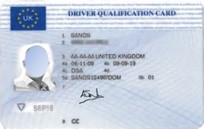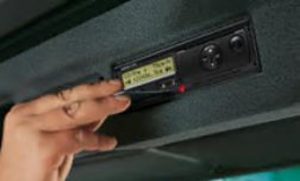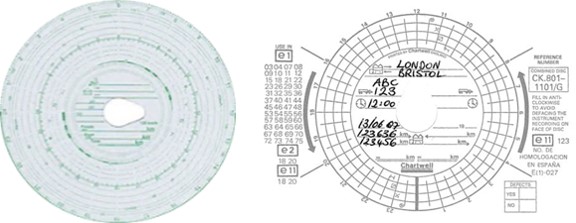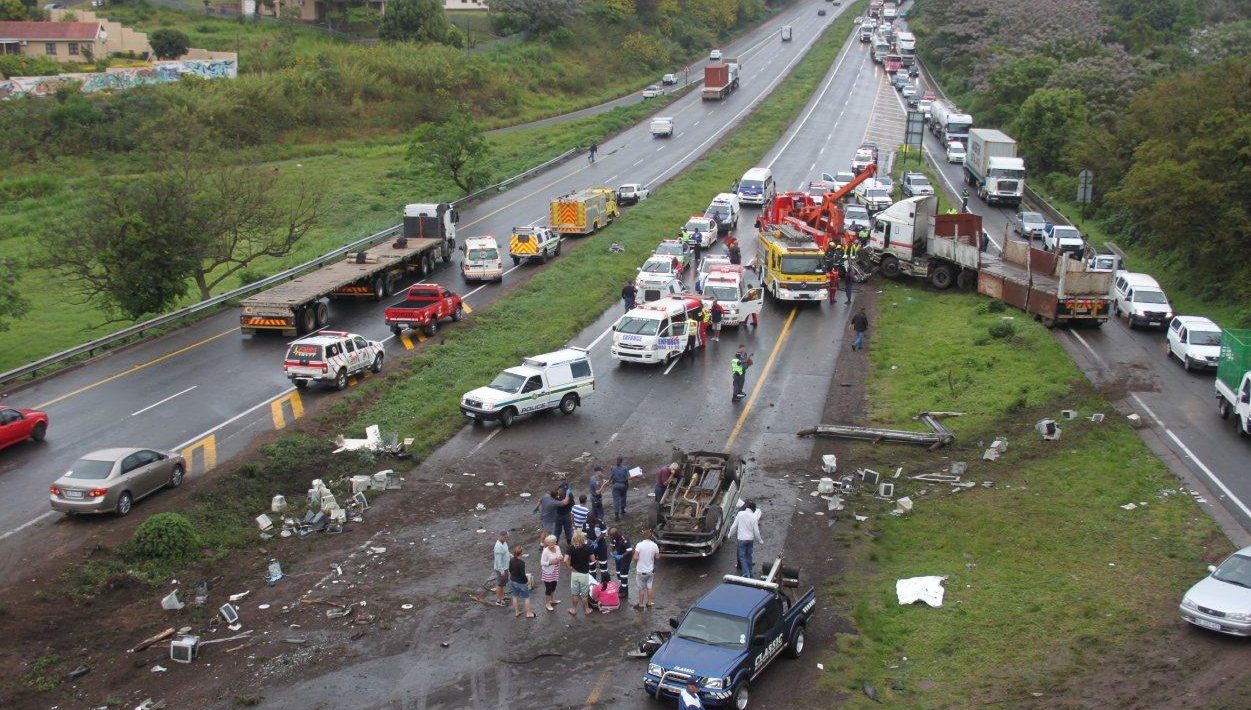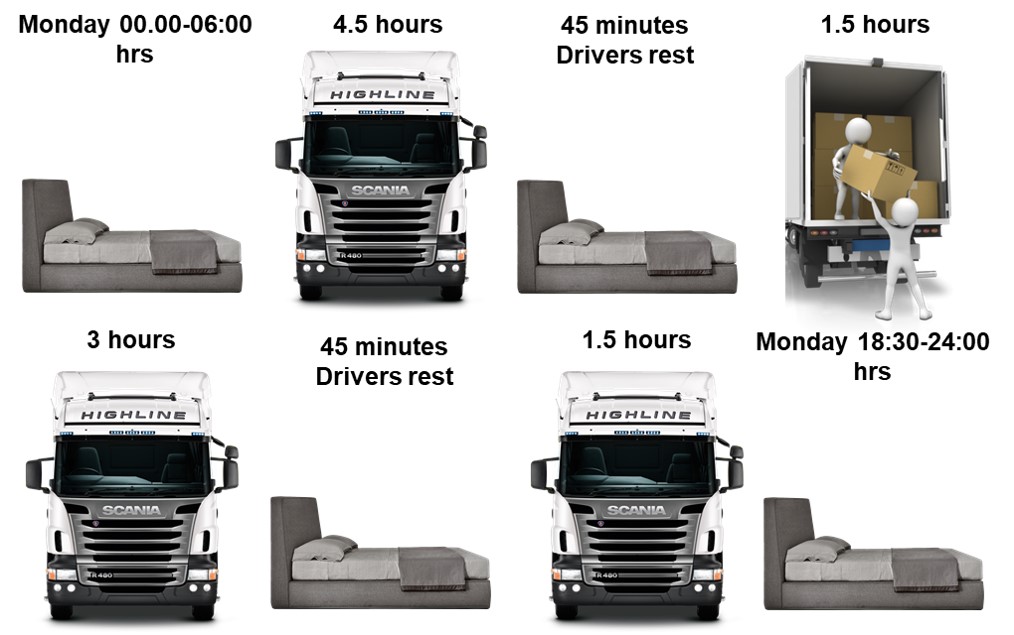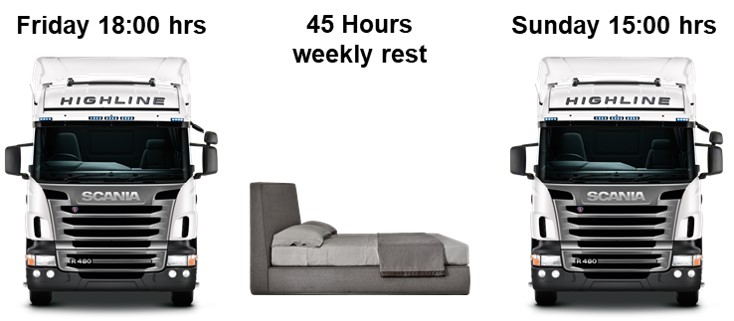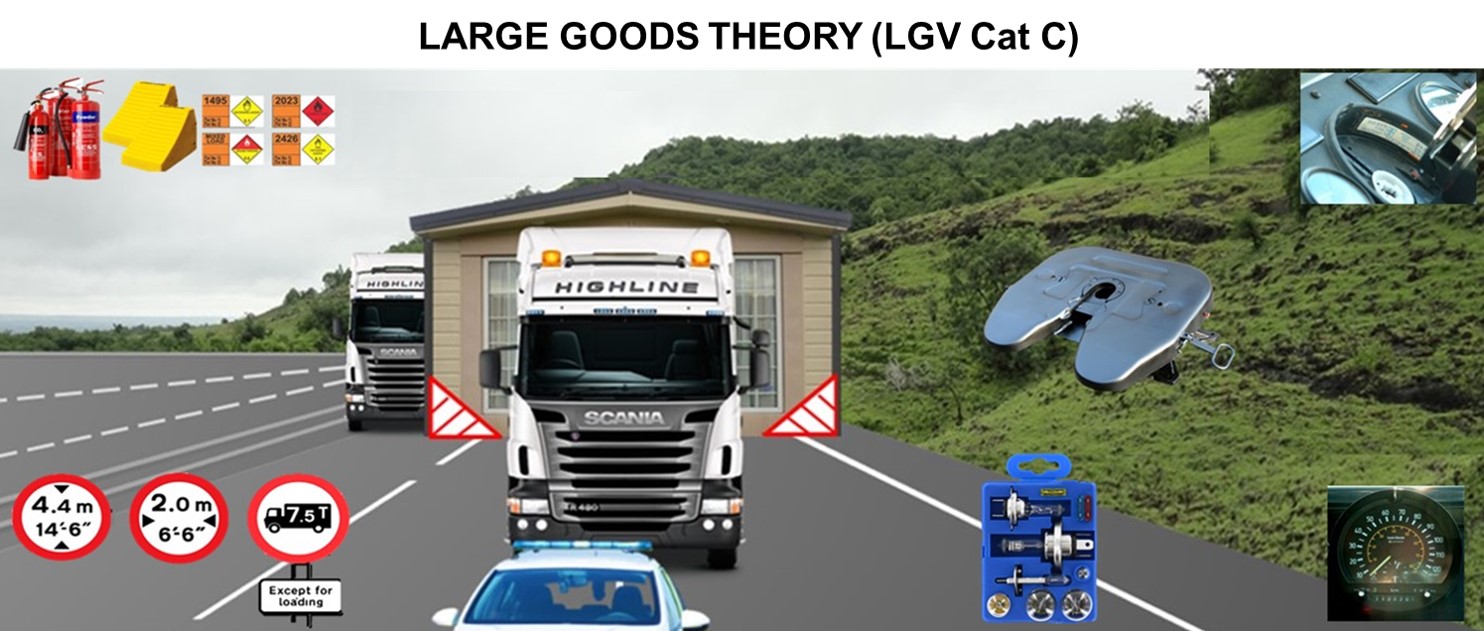DRIVERS HOURS
Goods vehicles driving hours are controlled for 3 reasons:
•Road safety.
•Safe working conditions.
•Fair competition.
As a driver you and you alone are responsible for making sure that you do not break the law by exceeding the driving, and working hours laid down in legislation. You are responsible for taking your correct breaks so that you do not endanger other road users through your fatigue. The regulations also promote fair competition, allowing all haulage companies to adopt a fair and legal policy.
All work whilst on duty is recorded, either by a digital card reader or a tachograph.
These systems record your driving, driving rest periods, other work, (unloading or loading), on duty and available for work (sat in a lay-by waiting for further instructions) and your daily rest.
Most modern vehicles use the digital card reader. Once you have completed your Certificate of Professional Competence (CPC) and have a drivers card,
you can apply for a digital card. In addition to your own personal Digi card there are also another three cards that can be used in the vehicle. This helps account for any additional movements of the vehicle.
Digital tachographs work by storing digital data on the driver and vehicle in their own memory and separately on a driver’s smart card.
Transport undertakings must periodically download this data from the digital tachograph (known as the Vehicle Unit or VU) every 90 days and from driver cards every 28 days and analyse the information to ensure that the rules have been complied with.
Analogue chart recordings are made by a stylus cutting traces into a wax-coated chart. Three separate styluses mark recordings of:
•speed
•distance travelled
•the driver’s activity (known as the ‘mode’)
It is important that this type of recording machine is regularly maintained. The Tachograph head must be checked every two years and calibrated every six years at a official calibration centre.
The inner part is used by the driver to write details of their name, location of start of journey, end location, date and odometer readings.
The reverse of a analogue chart normally contains an area for recording manual entries and details of other vehicles driven during the period covered.
Driving symbol
This is automatically recorded by most tachographs.
Other work
Covers all activities defined as work other than driving in scope of EU/ AETR rules. Includes any work for the same or another employer, within or outside the transport sector.
Availability
Covers periods of waiting time, the duration of which is known about in advance. Examples of what might count as a period of availability (POA) are accompanying a vehicle on a ferry crossing or waiting while other workers load/unload your vehicle. For mobile workers driving in a team, a POA would also include time spent sitting next to the driver while the vehicle is in motion (unless taking a break or performing other work, i.e. navigation).
Break or rest
Covers breaks in work and daily or weekly rest periods. Drivers may not carry out any driving or any other work. Break periods are to be used exclusively for recuperation. During a rest period a driver must be able to dispose freely of their time.
A driver is required to enter the following information on the centre field of a analogue chart that they are using to record their activities:
surname and first name (the law does not stipulate which order the names are put in – but your employer may have a policy on this)
the date and place (nearest town or city) where the use of the chart begins and ends. The year may be written in full or abbreviated – so both ‘2015’ and ‘15’ are acceptable – if the start and finish places are the same, both must be written on the chart – ditto marks are not acceptable.
The registration number(s) of vehicle(s) driven (which should be entered before departing on a new vehicle)
the time at which any change of vehicle takes place.
The odometer readings:
At the start of the first journey
At the end of the last journey
At the time of any change of vehicle, recording
the readings from both vehicles
Drivers must produce a record of their whole daily working period. So when drivers are unable to operate the instrument, have not been allocated a vehicle, or are working away from the vehicle and have had to remove their analogue chart, they must manually record their activities on the chart.
Most analogue charts have a specified place to make manual entries (usually on the reverse) however, manual entries can be made anywhere on the chart provided that they are clear and do not obliterate other recordings.
If a traffic enforcement officer takes your chart, you will need to replace it with a new one, make sure the officer has endorsed your new one with his name, number and signature.
DRIVERS HOURS
A driver’s week is defined as: 0.00 hrs. Monday to 24.00 hrs. the following Sunday, strange timings but it is the answer to one of the questions.
All driving is based on a two week period. Because of safe working conditions you can only drive for 90 hours during a two week period. If a VOSA officer checked your charts or digital drivers card, and you had exceeded this you would face a severe fine. They will always check a two week consecutive period.
Driving: You may drive for 9 hours a day, you can increase this to 10 hours twice a week, but can only drive for a maximum of six consecutive days. This gives you a maximum of 56 hours in a six day period. The problem comes on the second week; you will only be able to drive for 34 hours as the total for the two week period is 90. It is down to you the driver to manage your driving hours.
In the event of unforeseen circumstances you may have to exceed your daily driving hours. If you find yourself in a traffic queue because of a road closure due to an accident, you may need to carry on driving until you reach the first safe haven.
This is classed as unforeseen; you must continue with the same tachograph card and make a record of this delay on the back. If you are using a digital driver’s card it will record the delay.
Bad weather or road works are not classed as foreseen and cannot be used as an excuse to exceed your daily driving hours.
DRIVERS REST:
Drivers’ rest are the breaks that you must take during your nine or ten hour driving days. Unloading or loading your vehicle does not count as drivers rest.
You can drive continuously for 4.5 hours then you must take a 45 minute
break. Once you have had your break you can if you wish drive for another 4.5 hour period.
If you wished to extend your driving day to 10 hours you would have to take another 45 minute break before continuing.
The drivers rest periods can be taken in smaller periods if you wish, but you must still show a 45 minute break during any 4.5 hour driving period, the breaks cannot be less than 15 minutes. i.e.. Drive 2 hours, Rest 15 Minutes, Drive 2.5 hours, Rest 30 minutes, Drive 2 hours, Rest 15 Minutes,
Drive 2.5 hours and rest 30 minutes.
As you can see that in the example a 45 minutes break has been taken in
any 4.5 hour driving period. You must always take the
15 minute break first if you are taking smaller breaks.
If you arrive at a destination and need to take a break to comply with the law, but your payload is urgently required, someone else could move your vehicle, but a written explanation must be recorded on the back of the chart.
Haulage companies on occasion’s double man their trucks. This allows them to extend their working shift to 21 hours. But they both must have nine hours daily rest before and at the end of this day. However when you are not driving it cannot be classed as daily rest, it can only be classed as drivers rest.
DAILY REST:
Daily rest is the rest you take when off duty; this must be taken away from the vehicle if it is not fitted with a bunk.
The regulations state that you must have 11 hours daily rest
in a 24 hour period. This however can be reduced to 9 hours
three times a week.
The daily rest can be taken in two periods providing a period is not less than three hours, but the other period must be 9 hours.
Your days’ work is governed by the drivers rest and daily rest, but you could find yourself working for 13 to 15 hour days. This will also include the loading and unloading of your vehicle. The example above shows a typical day including 9 hours driving, remember you can extend this to 10 hours driving twice a week, in addition you may have to carry out additional work.
WEEKLY REST
At the end of your six day driving period you must take your weekly rest. The regulations state that you must have 45 hours.
If you find yourself away from your home base at the end of your authorised hours, you can reduce this weekly rest period to a minimum of 24 hours. If you do reduce this break you must make the time up by no later than the third weekend after the reduction.
DOMESTIC DRIVERS HOURS
Domestic driver’s hours are the hours you drive for no gain or reward, you may have hired a LGV for your own private use, ie. moving house, bin lorries and bus drivers do not need to use a tachograph or digital card but you must keep a written record.



